Do Collin Gerber, Miro Zryd or Alexander Heim sound familiar? If they do, you must be Swiss. If not, don’t worry, you’ll get used to their names, because you will read about them in future articles.
I didn’t know much about the NHL so, you are in good company if you don’t know the hockey leagues in Switzerland. There are quite a few differences between Swiss hockey and the NHL. Some may surprise you, and leave you scratching your head.
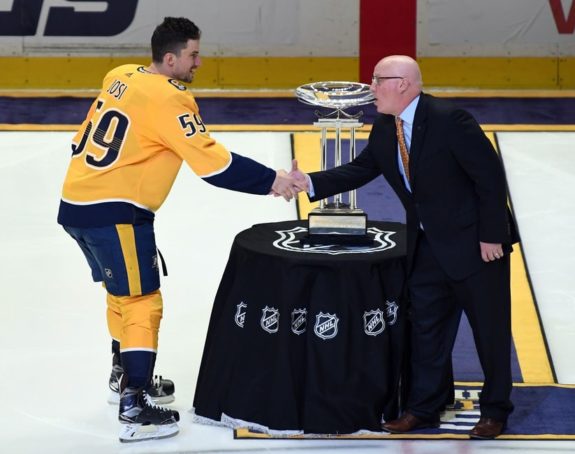
There are 12 teams in the National League, the country’s top league, that play 50 games per season. There are three groups and each team plays at least two games against each other. The west group is made up of Geneva, Bern, Fribourg and Lausanne. The central group includes ZSC Lions, Zug, Biel and the SCL Tigers. The east group includes Lugano, Ambrì, Davos and SC Rapperswil-Jona Lakers.
Comparing the NHL to Swiss National League
In the Swiss National League, points are tallied differently from the NHL. A win in regulation is worth three points. If the game goes into overtime or a shootout, the winning team receives two points and the loser one point.
The top eight teams earn a playoff spot and play a best-of-seven series. The four teams that don’t qualify play a classification round robin with two games against each other.
After that, the bottom two teams play the relegation play-out final to determine who will play against the Swiss Champion from the Swiss League. The Swiss League club qualifies for the National League if they win that best-of-seven series. The Swiss League is the second-highest league in Switzerland, which I will discuss in more detail in a future article.
All games from the National League are broadcast on the pay-tv channel MySports, which acquired the rights for 35 million Swiss Francs for five years and bumped former broadcaster Swisscom TV.
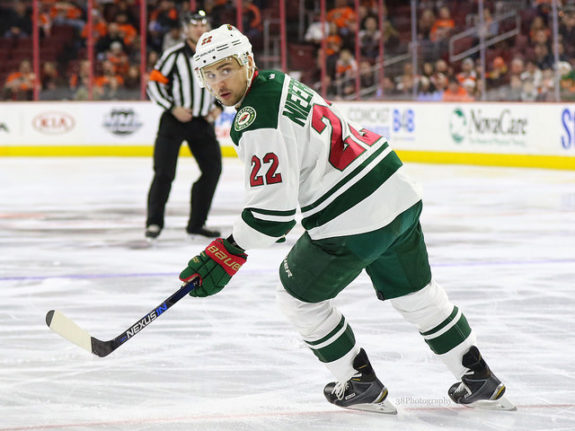
In Switzerland and the rest of Europe, there is no agreement between the owners and players. In fact, there’s no players’ association. Nor do the Swiss leagues have an affiliate system like in the NHL. There are only two teams in Switzerland that have a real farm team. Those are the ZSC Lions with the GCK Lions and the EV Zug who has the EVZ Academy. Both of these farm teams play in the Swiss League. They can exchange the players between each team as the NHL and the American Hockey League do.
The reason only two teams have an affiliate is due to player licenses in Swiss hockey. It is a difficult process to understand and explain but, basically, in Switzerland we have two types of licenses. They are called A and B. If player x has a license with team z then he can get a license in the next higher league or in the next lower league. Let’s take a look how this works between the ZSC Lions and the GCK Lions.
Player x has his license with the ZSC Lions. The ZSC Lions assign him to the A license. Now he cannot move one league higher because the ZSC Lions are already in the top league. But he can get sent down to the GCK Lions to play for them because they are one league lower than the ZSC Lions. However, he cannot get sent to the third league (in this example we call the club Y that plays in the MySports League). This is not allowed because he has his A license with the ZSC Lions.
But there are other issues that are not common in Europe and in Switzerland in particular. I will write about it in a future article to give you more insight about the rules and restrictions in the player movement between the teams and the players.
Another difference you will see, if you are visiting a game in Europe, is the rink size. The NHL is playing on smaller ice rinks. In Switzerland, we play on the Olympic-sized rinks.
Welcoming Import Players
Even though the Swiss leagues do not have a feeder system, they can import players from outside of Switzerland. Each team can have up to four import players in the game but they cannot have more than eight who have already appeared in a game that season. But the teams can have as many imports as they would like on their roster.
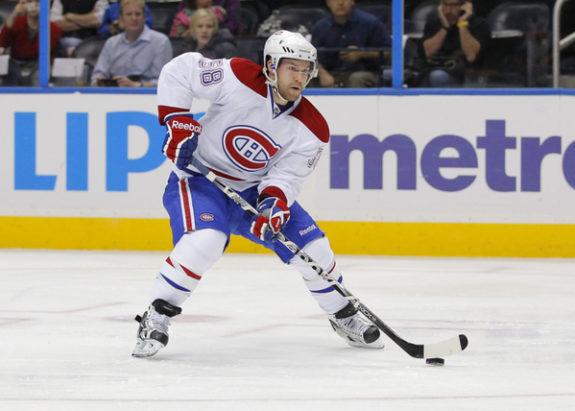
Former Montreal Canadien David Desharnais plays as an Import with Fribourg-Gottéron in Switzerland (THW Archives)
This rule is as gentlemen’s agreement under the clubs. Currently, European law does not allow that rule, and if a player or a team would decide to go to court, he will for sure be the winner. This is because Switzerland, which is not a member of the European Union, had to accept the EU’s law, which stated that each person can move and live freely in Europe. And this also applies to the import players in hockey. This rule was installed after a former Belgian soccer player went to court because he wasn’t allowed to play in the Netherlands. (Bosmann Verdict)
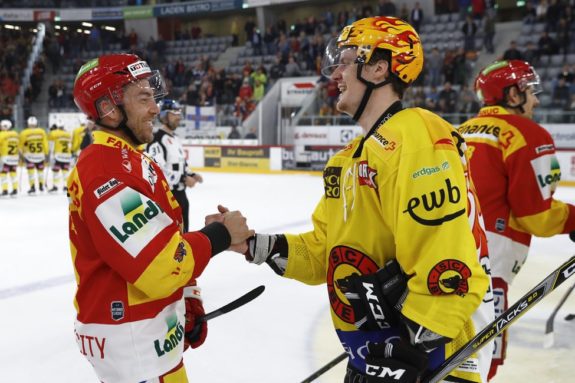
For import players from the US or Canada, their biggest challenge is adjusting to the rink size. Players from outside of Europe must adjust their playing style. Some say it only took a few games, others say it took them a full season.
Swiss Hockey Sponsors
Swiss hockey players can look like skating advertisements with all the logos on their jerseys. Each team has a main sponsor and the top two leagues on the whole have their main sponsor as well.
In that case, you will see the league’s top scorer skating in a yellow helmet with a yellow jersey labelled PostFinance. PostFinance donates CHF 200 for each point the top scorer accumulates in the National League or CHF 100 in the Swiss League.
This money is donated to the development of young hockey players from the age of 6 to 15. At the end of the regular season, PostFinance doubles that amount and gives it to the Swiss Junior National Teams U18 and U20. They help provide the much-needed income for the SIHF (Swiss Ice Hockey Federation) to develop their best players between the ages of 16 and 19.
Without this money, there would be no Nico Hischier, Nino Niederreiter or Roman Josi in the NHL. The teams and the Federation wouldn’t have the chance to train them and give them the best development possible. Without that, SIHF would go away. To put this simple: there would be no money for youth development, and interested players would move on to soccer. Because that sport is cheaper and you do not need a lot of expensive equipment.
Swiss NHL Players
Speaking of the NHL, let’s see how many Swiss hockey players are in the NHL.
There is Roman Josi (Nashville Predators) who started playing in Berne. Here he started his career and was a two-time Swiss champion even if the second one he earned was during the last lockout. He also won two silver medals at the World Championships and a gold medal at the Division I World Junior Championships and helped get Switzerland promoted in 2010.
For sure you all know Nico Hischier. He started to play hockey in Visp, a small town in the canton Wallis. With his older brother, Luca, he moved on to Bern where he played as a 16-year-old under former Ottawa Senators coach Guy Boucher.
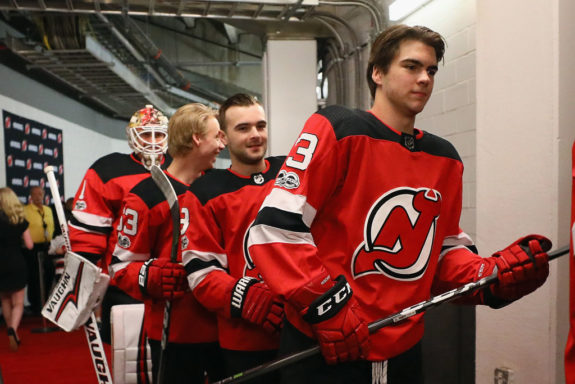
Mark Streit is also a Bern-based player. He was the captain of the national team for many years and played for the New York Islanders, Pittsburgh Penguins and Montreal Canadiens.
With Martin Gerber, Switzerland had a goalkeeper who won the Stanley Cup with the Carolina Hurricanes. He started to play hockey in the fourth league (known in Switzerland as 2. Liga) with Signau. Signau is a town with about 500 inhabitants in the Emmental. He moved on to the SCL Tigers, where he got promoted to the National League. From there he moved on to the NHL.
Another goalkeeper is Jonas Hiller. Hiller started in Herisau and then played for the HC Davos before he took the jump over the Atlantic Ocean to play with the Anaheim Ducks.
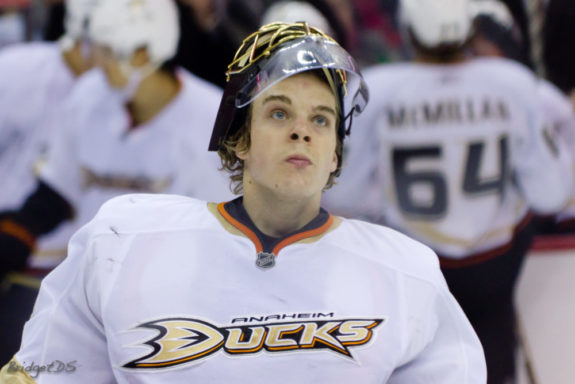
And then there is Reto Berra. He had some bad luck in the last NHL stint. He never had a real chance to show how good he is. Before he moved back to Switzerland to play with Fribourg-Gottéron he was with the Calgary Flames, the same team as Hiller.
With the Washington Capitals is Jonas Siegenthaler. He got his feet wet with the ZSC Lions. Like Josi, he first got used to the higher level in Switzerland before he took the flight across the Atlantic to start to play in North America.
Gaetan Haas is currently playing for the Edmonton Oilers. Before this, he learned to play hockey in Biel. From there he moved onto SC Bern and was an important part of last year’s success in winning the championship.
All those players have in common that they got to the NHL after they had some games in the National League.

But those are not the only ones who are playing in the NHL. There is Kevin Fiala, Denis Malgin, Dean Kukan, Nino Niederreiter, Sven Bartschi, Luca Sbisa, Philip Kurashev, Mirco Müller, Timo Meyer and Yannick Weber. They all have in common that they got developed and were coached in Switzerland before they flew over to North America.
But Switzerland has more to offer than just those players. Or did you know, that for many years Team Canada trusted a physiotherapist from Switzerland at all Men’s World Championships and Olympic tournaments? I bet you didn’t know that. His name, by the way, was Andy Hüppi.